Nature Knows and Psionic Success
God provides
Dementia symptoms: Four signs when a person sleeps that could signal the condition
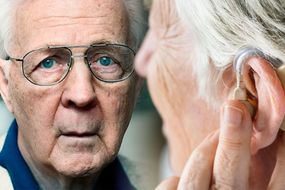
Dementia is a term used to describe a group of related symptoms associated with the ongoing decline of brain function. There are four main types of the condition – vascular dementia, Alzheimer’s disease, frontotemporal dementia and Lewy body dementia. Recognising the symptoms of dementia can give a person the opportunity to slow down the condition and to receive the appropriate treatment they may require sooner. Problems with sleep are very common for people with dementia, according to Alzheimer’s Society, and the charity says there are five ways it can be affected. Dementia: Study finds surprising risk factor Dementia: Could this popular diet reduce your risk? Problems with sleep are very common for people with dementia and there are five ways it can be affected It says these can include: Sleeping during the day and being awake and restless during the night Becoming disorientated in the dark if they wake up to use the toilet Waking up more often and staying awake longer during the night Getting up in the early hours and thinking it’s day time or time to go to work (disorientation in time) Not being able to tell the difference between night and day The charity further explains: “Nobody completely understands why dementia affects sleeping patterns. For some people, it may be that their internal ‘biological clock’, which judges what time it is, becomes damaged so the person starts to feel sleepy at the wrong time of day. “There are also other parts of the brain which control whether or not we stay awake, and these may also not work properly if they become damaged. “Sometimes a person with dementia might completely reverse their normal sleep pattern, staying up all night and then sleeping all day.” But the charity also notes these sleep changes are usually linked […]
Why I’m turning my son into a cyborg

illustration of a child as a cyborg Imagine if everyone spoke a language you don’t understand. People have been speaking it around you since the day you were born, but while everyone else picks it up immediately, for you it means nothing. Others become frustrated with you. Friendships and jobs are difficult. Just being “normal” becomes a battle. For many with autism, this is the language of emotion. For those on the spectrum, fluency in facial expressions doesn’t come for free as it does for “neurotypicals.” To them, reading facial expressions seems like a superpower. So when my son was diagnosed, I reacted not just as a mom. I reacted as a mad scientist and built him a superpower. This isn’t the first time I’ve played mad scientist with my son’s biology. When he was diagnosed with type 1 diabetes, I hacked his insulin pump and built an AI that learned to match his insulin to his emotions and activities. I’ve also explored neurotechnologies to augment human sight, hearing, memory, creativity, and emotions. Tiger moms might obsess over the “right” prep schools and extracurriculars for their child, but I say why leave their intellect up to chance? I’ve chosen to turn my son into a cyborg and change the definition of what it means to be human. But do my son’s engineered superpowers make him more human, or less? How the CIA taught me to smile Life gave me an amazing and exhausting little boy. It also gave me unique tools to help him overcome his challenges. The first came in the form of a crazy CIA scheme to create an AI to catch liars. Years ago, on my very first machine-learning project as an undergrad, I helped build a real-time lie-detection system that could work off raw video. […]
Hypnotherapy, healing and growth: How meditation and self-hypnosis can improve your mental health

( Natural News ) Meditation and hypnosis are two popular and widely studied techniques used for therapy. While they slightly differ in the way they are executed, they can be used to achieve the same thing and offer similar benefits. According to several studies, meditation and hypnosis can help people overcome mental health problems and behavioral issues. They can also help them grow in many ways. Meditation, hypnosis, and self-hypnosis Meditation is a training in awareness that helps people develop a healthy sense of perspective. The goal of meditation is not to turn off emotions, but to allow a person to observe them without judgment, so he or she can understand them better. Meditation is also a powerful relaxation technique that can be learned easily and practiced alone. Hypnotherapy or hypnosis, on the other hand, is not a trick or a performance. It is a technique used by therapists to put a person in a state where they are susceptible to suggestion. This form of therapy helps people cope with negative emotions and feelings of stress and anxiety . It also helps them get rid of bad habits. Self-hypnosis is a kind of meditation that involves a person making the suggestion himself instead of listening to a therapist. But like hypnotherapy, self-hypnosis makes use of the trance state to encourage growth and healing. The trance state is a state of relaxation that entails a person’s full attention and focus. Many clinical studies have reported the effectiveness of these techniques in helping people deal with many life challenges. In addition, hypnotherapy has gained more success than traditional therapies like psychotherapy and counseling. This is due to its ability to influence both the conscious and subconscious mind. Discover how to prevent and reverse heart disease (and other cardio related events) with […]
Boost your UX with these successful interaction design principles

There’s a fine line between an interaction that works and one that is unusable. Interaction design principles help bridge the divide . Well-executed interaction design plays a huge role in the implementation of great UX and is indisputably one of the fundamentals of UX design principles. “Unusable” means “I’m moving on,” and no matter how “good looking” the visual design-how fancy that animation is-mess up the interaction design and your UX is kaput. Get it right and you’ll be well on your way to a much better UX even if the aesthetics fall short. The product will have a much better chance of succeeding, which in turn contributes to the bottom line. Interaction design (IxD) is defined by the Interaction Design Association (IxDA) as “the structure and behavior of interactive systems. Interaction designers strive to create meaningful relationships between people and the products and services they use, from computers to mobile devices to appliances and beyond.” Experience is critical, for it determines how fondly people remember their interactions. -Don Norman in The Design of Everyday Things . Following interaction design principles contributes immensely to great interaction design, which in turn will contribute to the experience. It’s possible that all of today’s devices and tech could be replaced with something entirely different overnight, yet because of its lasting principles, great interaction design would still be achievable. Those constant principles are about what motivates people, their behavior, and how they think. Imagine if every door handle on every door worked differently. For one you would have to push first into the door then down; for another, you’d have to pull up instead of pressing down, and yet another you’d have to pull up twice and then down-a total disaster. In fact, the phrase “turn the door handle” assumes there is only […]
Buffalo Bills 53-man roster prediction: Tight ends

Who will the Buffalo Bills take into 2019 as their tight ends, and how many will there be on the roster? Throughout the 2019 NFL off-season, the Buffalo Bills made a few things clear. Among those few things is a pinpoint aggressiveness in fixing a tight end position that had struggled as a whole in years past. Via work done in free agency, releases, and the NFL Draft, the Bills should enter 2019 with a tight end unit as listed below. (1) Tyler Kroft (2) Dawson Knox (3) Lee Smith (4) Tommy Sweeney You’ll notice a lack of Jason Croom on the depth chart; that’s not a mistake. Though Croom has NFL experience with the Bills, he’s a developmental project with far more potential than production. Yet, so far, he hasn’t proved either are superior to the four listed. The tight end group starts with Tyler Kroft — a free agency addition (three years, $18.750 million) by way of the Cincinnati Bengals. Kroft’s production throughout his four-year is minimal — 67 catches for 661 yards and eight touchdowns — with an outlier year in 2017. Filling in for oft-injured Pro Bowler Tyler Eifert , Kroft caught 42 catches for 404 yards and seven touchdowns. Before 2017, Kroft was an anomaly; as a backup tight end behind a proven starter. But, following his breakout year, the 6-foot-6, 252-pound tight end was expected to flourish in an offense that should now give him touches. However, injuries derailed that thought, as a broken foot ended his season fives week in. Despite finishing 2018 on the injured reserve, the Bills took a calculated gamble in Kroft. His potential as move tight end is immense — he’s a massive target with excellent ball skills and developed route-running — and they must’ve seen that. Due […]
Why do kids get attached to the digital world?

Not just kids, most humans who have access are in some way addicted to technology, whether it is to consume content, create the same or interact with others. Technology is exposing children and offering them with a chance of experiencing things they might not be able to see, feel, hear or touch in the real world. (AFP/file) ‘Oh my! I have forgotten my phone. I have to go back and get it!’ is a lament heard over and over again. The phone has become an essential and integral part of our existence. This is not just kids we are talking about. The adult world has the mobile phone as a natural body extension and cannot imagine life without it. I am 55 years old. The world wide web went live on the 6th of August 1991 when I was already 27 years old and while the first demo of the mobile phone happened in 1973, it was between 1983 and 2014 when its popularity raged. During that time worldwide mobile phone subscriptions grew to over 7 billion users. I had my first mobile phone in 1995 and I have never been without one since. Not for a single day since. The ways I use the mobile has expanded, the amount of time I use it for extended and what I use it for has exploded. The attachment and addiction is worldwide. It is not only kids who are the victims of the digital world. Something like the internet that has only been in existence for about two and half decades has changed the way we do almost everything. We are dependent. Things are changing for our world and that too, at an alarming pace when it comes to technology and the advancement it is bringing with it. Every field […]
Water: The Miracle Cure

Dear Mr. Dad: This summer is shaping up to be a hot one and I’m concerned that my wife and kids (and probably myself) aren’t drinking enough water. How much should we be drinking and why is it so important (I need facts to convince the skeptics in the family)? A: You’ve probably heard that we should drink eight 8-ounce glasses of water every day. Unfortunately, there’s no hard science behind that number, but it’s a good place to start. On a relatively mild day, we lose two to three liters (8-12 cups) of water simply by breathing, sweating, urinating, and digesting. Men are on the higher end of the scale, women on the lower. If you exercise regularly or spend time in hot climates, you’ll need even more just to stay even. Symptoms of dehydration range from mild (headaches, poor concentration, dry mouth, constipation, lack of energy, dry skin, and irritability) to severe (dizziness, rapid heartbeat, muscle spasms, shriveled skin, sunken eyes, confusion, and even death). Keeping track of your water intake and monitoring your symptoms is important. But a far easier way of determining whether you’re properly hydrated is to simply look at your urine. Unless you’ve just taken some vitamins, urine should be clear or very pale yellow. If it’s dark yellow or has a strong odor, you’re probably dehydrated. Water plays a key role in digesting, absorbing, and transporting nutrients and in safely eliminating toxins and waste from our systems. It helps cushion our joints and protect our organs. Not getting enough of it has consequences. Here’s what research tells us: • Kids are more susceptible. Since children often don’t recognize when they’re thirsty, they’re at higher risk of becoming dehydrated. • Fluoride. Fluoride (which many municipalities add to the water supply) can help prevent […]
Top ten tips for how to beat the post-lunch energy slump without taking a nap

Chewing gum will keep you more alert That dip in energy that creeps up on us in the afternoon is a common phenomenon – and it’s not our fault. Research shows that we experience a cooling of body temperature between 1pm and 3pm – a sign to our bodies that it’s time to sleep. Sadly, we can’t all take a daytime nap, so here are some ideas on how to re-energise when your body tries to hit the snooze button. Have a phone-free lunch Research published in academic journal Computers in Human Behavior found workers who used phones on lunch breaks to scroll the web and social media were more emotionally tired in the afternoon than those who went phone-free. Our working memory, which handles incoming information, struggles to cope with the volume of traffic that bombards us when we’re online, often leading to overload and anxiety. So have a proper break. Stop procrastinating Putting off a job can be more draining for your brain than actually doing the task as it has to deal with a recurring stream of background worry over getting the task done. Research suggests people who procrastinate have higher levels of stress and lower energy. So if you’re a dilly-dallier and a large piece of work is overwhelming, try dividing it into manageable chunks. Often, once a job is started, you’ll feel motivated to finish. When you’ve done a portion of the job, have a break and a treat. Go ‘swimming’ Standing, dynamic stretches that move multiple areas of the body are great for boosting energy – they raise the heart rate and blood flow, explains Lexie Williamson, author of The Stretching Bible. “Try the ‘Swimming Arms’ stretch,” she says. “Drop your fingertips onto your shoulders and ‘swim’ your arms by making alternate circles […]
8 Effects That Happen When You Eat Garlic Daily
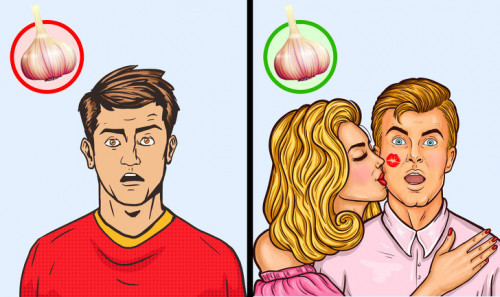
Garlic is the type of ingredient that everyone of us ate at least once. Though the taste is strong and hardly anyone can eat it raw or without other foods, eating garlic constantly can improve your health tremendously. Here are 8 effects that happen when you consume garlic daily. Break is going to tell you why you need to eat garlic regularly. 1. You’ll become more attractive. © Depositphotos © Depositphotos © Depositphotos Garlic makes men more attractive. However, it has always been considered that the smell of garlic discourages any desire to communicate. But recent studies prove that that’s a mistake. The only restriction is that a man should eat 2 cloves of garlic, 12 hours prior to a date in order to impress a woman. Turns out, women go crazy about the body odor of a man who has eaten garlic. However, it’s difficult for scientists to explain this phenomenon. Maybe the reason is hidden in its antimicrobial properties, which make the smell of the sweat not so sharp. 2. Your immune system will improve. © Depositphotos © Depositphotos © Depositphotos The fact that garlic protects us from various viruses and colds was known even to our grannies. But scientists have confirmed once again that one should regularly consume garlic in order to keep from getting sick in the winter. This is all because it contains a bunch of vitamins, beneficial oils, and amino acids. Moreover, it has allicin — an organic compound that kills bacteria and fungi. An important note: Garlic should be fresh in order to protect you from diseases. Allicin is formed only by the mechanical destruction of plant cells that happen when it is being cut or pressed. When a clove’s integrity is destructed, its components mix and form an antimicrobial compound, whereas […]
The Best Natural Ways to Keep Your Brain from Alzheimer’s
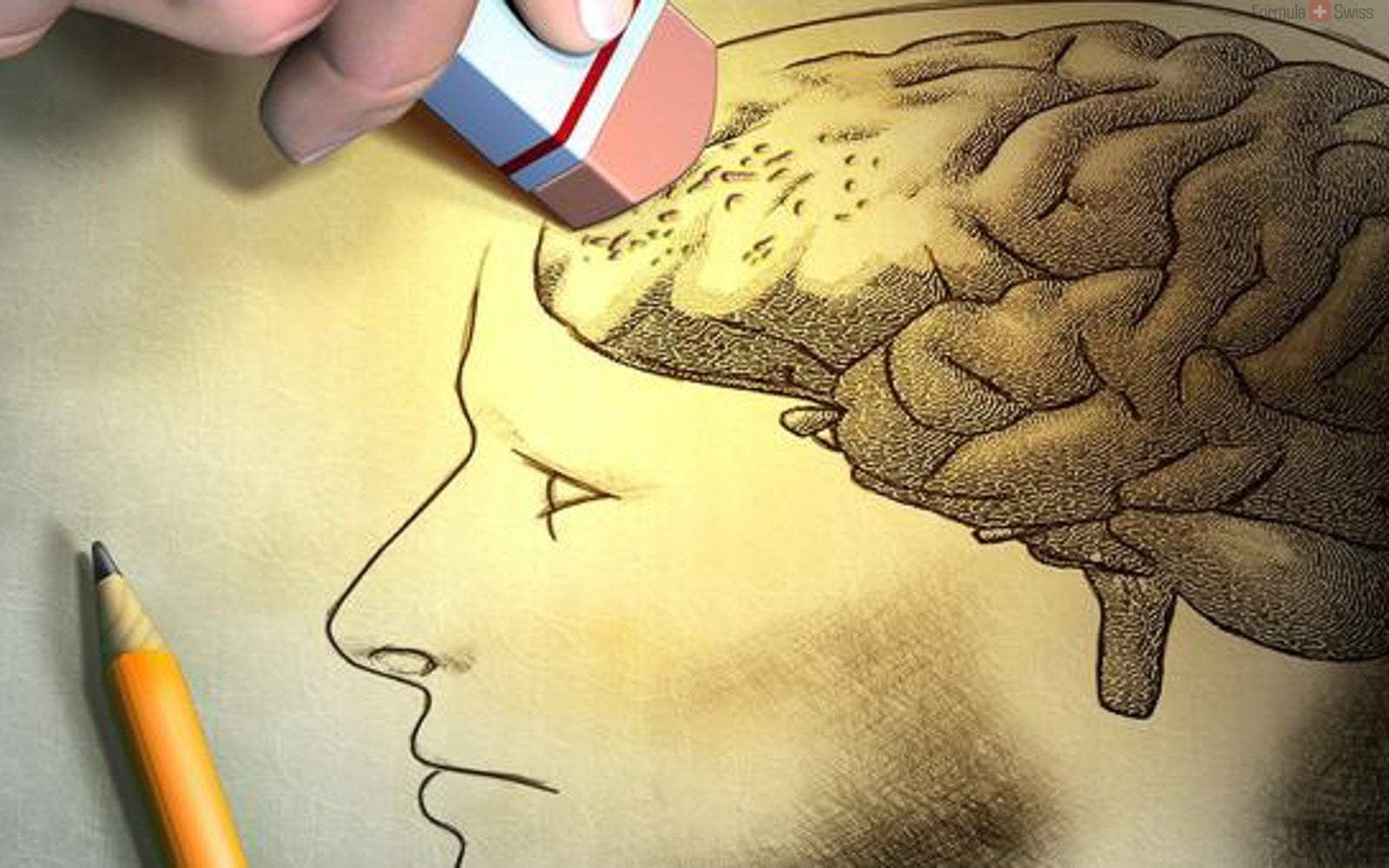
The brain is the single most incredible part of your body, but we don’t do enough to keep it healthy and young. Your diet and lifestyle have as much of an effect on who you are as anything you can imagine, and failing to take care of our mental health could lead to early cognitive decline and diseases like dementia. The following are simple exercises designed to keep your brain young and your mind sharp through the years. Make an effort to implement these changes to your daily life, and you will be surprised at how productive the mind can be even in old age. 1) Regular Exercise Regular exercise can reduce your risk of acquiring dementia by up to 50% – that’s according to the Alzheimer’s Research and Prevention Center. To get the most from your workouts, aim for at least 100 minutes of moderate exercise every week, and try a combination of simple exercises such as walking, biking, swimming, running, etc. A gradual increase in activity will improve energy levels and keep your brain active. 2) Mental Stimulation Just like any other organ in the body, the more you use the brain, the healthier it gets. Senior adults who participate in mental training generally improve their cognitive function over time, despite an increase in years. Taking a few sessions of brain games every week can have your brain sharpened for the next decade – mainly because of the way the cells in the hippocampus regenerate from activating the memory and analytical parts of the brain. In case you’re looking for a place to start, we recommend you pick something you like; for instance, leaning a new language may be interesting to some people. If not, then find a brain game you like and get your friends to […]
Why I’m turning my son into a cyborg

Where do we draw the line between boosting human potential and eroding our humanity? Imagine if everyone spoke a language you don’t understand. People have been speaking it around you since the day you were born, but while everyone else picks it up immediately, for you it means nothing. Others become frustrated with you. Friendships and jobs are difficult. Just being “normal” becomes a battle. For many with autism, this is the language of emotion. For those on the spectrum, fluency in facial expressions doesn’t come for free as it does for “neurotypicals.” To them, reading facial expressions seems like a superpower. So when my son was diagnosed, I reacted not just as a mom. I reacted as a mad scientist and built him a superpower. This isn’t the first time I’ve played mad scientist with my son’s biology. When he was diagnosed with type 1 diabetes, I hacked his insulin pump and built an AI that learned to match his insulin to his emotions and activities. I’ve also explored neurotechnologies to augment human sight, hearing, memory, creativity, and emotions. Tiger moms might obsess over the “right” prep schools and extracurriculars for their child, but I say why leave their intellect up to chance? I’ve chosen to turn my son into a cyborg and change the definition of what it means to be human. But do my son’s engineered superpowers make him more human, or less? How the CIA taught me to smile Life gave me an amazing and exhausting little boy. It also gave me unique tools to help him overcome his challenges. The first came in the form of a crazy CIA scheme to create an AI to catch liars. Years ago, on my very first machine-learning project as an undergrad, I helped build a real-time lie-detection […]
Coffee really can make you live longer

( Natural News ) The secret to a long life may be your cup of joe. Studies show that regular coffee drinkers have a reduced risk of dying prematurely compared to non-drinkers. Drinking coffee may increase your chances of living a longer life Two studies published in the Annals of Internal Medicine looked into the drinking habits of over 700,000 people in the U.S. and Europe. They aimed to investigate the link between drinking coffee and death rates. They found that people with increased coffee consumption have a reduced risk of dying prematurely compared with people who consume less coffee or do not drink at all. Research conducted in the U.S. revealed that African Americans, Japanese Americans, Latinos, and Caucasians who consumed more than four cups of coffee daily had an 18 percent reduced risk of premature death. People who consumed only a cup a day also had a 12 percent lower risk. Research conducted in Europe arrived at a similar conclusion. They found that people who drink more coffee throughout the day had a reduced risk of seven to 12 percent of dying prematurely. Meanwhile, people who drank java coffee had less digestive and heart-related diseases. In both studies, they found that caffeinated and decaffeinated coffee have similar effects, which means the life-extending benefit of drinking coffee is not attributed to caffeine. Coffee contains compounds that have antioxidant and anti-inflammatory properties. Studies suggest that these compounds are responsible for most health benefits found in coffee. Coffee can perk up your health, too Aside from reducing the risk of premature death, coffee is known for a lot of other health benefits . (Related: Drinking Coffee Reduces Risk of Stroke, Cancer and Dementia. ) Discover how to prevent and reverse heart disease (and other cardio related events) with this free […]
Cumulative Cognitive Reserve Tied to Dementia Risk

LOS ANGELES — Higher scores on a measure of cumulative lifetime cognitive reserve reduced dementia risk even in the presence of brain pathologies, researchers reported here. Older adults with the highest levels of lifespan cognitive reserve had a 39% lower risk of dementia than those with the lowest levels — and dementia risk was less for these people even if they had Alzheimer’s or vascular pathology, reported Xiuying Qi, PhD, and Weili Xu, MD, PhD, of Tianjin Medical University in China, and colleagues at the Alzheimer’s Association International Conference (AAIC). The study was published simultaneously in JAMA Neurology . Cognitive reserve has been proposed as a compensatory mechanism to explain why some people maintain better cognitive function with age-related brain changes or disease-related pathologies, noted co-author Hui Wu, also of Tianjin Medical University. In much research, "one reserve-enhancing factor during a certain time period alone — such as education, social, or cognitive activities — has been considered as a proxy measure of cognitive reserve," Wu told MedPage Today . "However, emerging evidence has suggested that cognitive reserve is an active construct which develops from continued life experiences." "Our findings suggest that accumulative educational and mentally-stimulating activities enhancing cognitive reserve might be a feasible strategy to prevent dementia, even in people with high Alzheimer’s disease or vascular pathologies," she added. To create a cumulative cognitive reserve measurement that spanned a lifetime, the researchers collected data about mental and social activities from 1,602 participants in the Rush University Memory and Aging Project , an ongoing community-based prospective cohort study. The average age of participants was nearly 80 and most participants (75.9%) were women. The researchers constructed a lifespan cognitive reserve score that incorporated education, cognitive activities in early, mid-, and late life, social activity in late life, and social networks late […]
Wimbledon: How Do The World’s Top Tennis Players Stay In Shape?
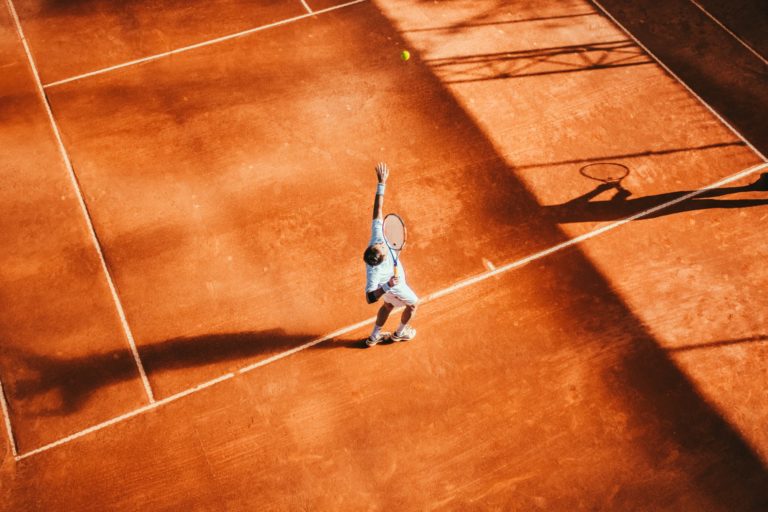
Wimbledon is coming to an end and as usual it has been thrilling. While each of the world’s top tennis players gives their all during the world’s biggest tennis tournament, we’re breaking down how they prioritize their health and well-being both on and off the court. Wimbledon Player’s Health Secrets While the 28-year-old tennis player only made it to the quarter-final stage of Wimbledon before being knocked out by Barbora Strycova, her incredible physique and all-around strength were put on notice. So how does the three-time Women’s Tennis Association stay healthy? By prioritizing different aspects of her diet. She’s practices mindful eating Speaking to the Telegraph in 2017 , the Australian turned British-citizen revealed that she is incredibly conscious about making the right food choices. “I am always aware of what I am putting into my body and what I am going to get out of it in terms of energy or recovery. But also I know everything is okay in moderation.” she shared. Eating mindfully may seem intimidating, but doing so not only improves your relationship with food but it also comes with a host of health benefits. Firstly, it prevents overeating which then means a reduced risk of binge eating and unhealthy weight gain. Secondly, mindful eating also improves your digestion and it can help the body better absorb all the necessary nutrients. Lastly, mindful eating allows you to enjoy the moment and the food. A mindful eating technique that everybody can adopt is Hara Hachi Bu. This is a Japanese term that teaches one to eat until they are only 80% full and it is regularly practiced by the Okinawans in Japan . Okinawa also happens to be a Blue Zone. This makes it virtually free of diseases, with numerous healthy inhabitants living up to 100 […]
Wake up refreshed: 7 tiny changes that’ll result in better sleep – every night

Sleep isn’t a luxury. In fact – skimping on zzz’s compromises everything from your immune system to your memory. When we sleep not only are we getting some much-needed rest from our increasingly busy lives, we are also allowing out body to pretty much regenerate and renew itself. It’s true. For instance, evidence suggests that the brain’s trillions of nerve cells literally rewire themselves when we sleep, and as for our skin – well, there is a reason it is called beauty sleep, you know. To view this media, you need an HTML5 capable device or download the Adobe Flash player. Getting enough sleep is all sorts of good for our health, and can actually reduce your risk for heart problems, obesity, high blood pressure, diabetes and even cancer. The general advice is that we should aim for between seven and nine hours of sleep at night, something many of us struggle to get. However, sometimes small changes can end up having big and long-lasting effects , and if you are struggling with your sleep, try making one (or all) of these adjustments and see how you get on: 1. Ditch the afternoon latte If you have trouble falling asleep at night or if your sleep is restless , caffeine may be the issue. Our ability to recover from the effect of caffeine diminishes as we age, so it may be time to give up late-night coffees—or even late-afternoon ones. 2. Swap your regular cuppa for camomile tea Experts are out on whether or not herbal teas actually have an effect of sleep, but what we do know is that a calming evening routine can massively improve your chance of falling asleep when you head hits the pillow. Entering sleep in a more relaxed state aids in the quality […]
The amazing power of curry: Why eating this dish is so good for your health

( Natural News ) Once just a staple in Indian homes, curry has become a worldwide sensation in recent years. From England to Japan — the world is in love with curry, and there are easily dozens (if not hundreds) of ways to prepare it. From its distinct aroma to its unique flavor, the dish has truly found a home in the hearts of culinary lovers. What is even more amazing about curry is that it has a multitude of health benefits. A study published in Nutrition Journal found that curry can greatly benefit cardiovascular health . Curry helps increase blood flow Researchers asked 14 healthy male subjects to eat either a spice-free control meal or a 500-calorie curry meal. The latter, in particular, consisted of 180 grams of curry or control and 200 grams of rice. Before the activity, researchers obtained initial data about the participants’ blood vessel profiles. They also got the same data an hour after eating the curry meal. Based on the results, researchers found that those who ate a curry-free meal had a significant decrease in blood flow. In contrast, they found that participants who ate a single serving of curry had an increase in blood flow. From this, the researchers concluded that the consumption of curry prevented the inner lining of the blood vessels (endothelium) from constricting, thereby, increasing blood flow in the cardiovascular system. Moreover, they attributed curry’s effect on blood flow to its ingredients — all of which are known antioxidants. This makes curry a great addition to diets, especially for those at risk of atherosclerosis. Discover how to prevent and reverse heart disease (and other cardio related events) with this free ebook : Written by popular Natural News writer Vicki Batt, this book includes everything you need to know about […]
Rich in health benefits, enjoy blackberries all year

Blackberries ( Rubus fruticosus ) are usually picked between July to August, but you can enjoy these nutritious berries throughout the year. Like other berries, blackberries offer amazing health benefits . Here are just some of them. They’re rich in vitamin C. A cup of raw blackberries provides at least half of the recommended daily target for vitamin C. Vitamin C is crucial for various bodily functions: It helps boost your immunity . It keeps your skin healthy. It’s essential for DNA repair. It’s necessary for the production of collagen and serotonin, a neurotransmitter that promotes happiness and sleep. It promotes wound healing. It helps fight free radicals in your body. It improves iron absorption. It helps prevent scurvy . They’re chock-full of fiber. A cup of fresh blackberries (or 1 and 1/4 cups of frozen blackberries) contains around 60 calories and about eight grams of fiber, or one-third of the recommended daily value. Fiber promotes weight loss by making you feel full for longer periods and curbing cholesterol. Dietary fiber can also help regulate blood sugar and insulin levels. Getting enough dietary fiber can prevent digestive issues such as bloating, constipation, or stomach pain. Blackberries also support digestive health because their fiber content serves as prebiotics, which feed the beneficial bacteria in your gut that are often associated with immunity, mood, and anti-inflammatory effects. They help protect your brain. Blackberries contain antioxidants that protect against brain inflammation , as well as help change the way neurons communicate. Both these outcomes may slow age-related memory loss, strengthen motor coordination, and prevent cognitive decline. They support bone health. Consuming a one-cup serving of raw blackberries can give you more than one-third of the daily recommended value for vitamin K , which helps with blood clotting and is crucial for bone […]
Rich in health benefits, enjoy blackberries all year
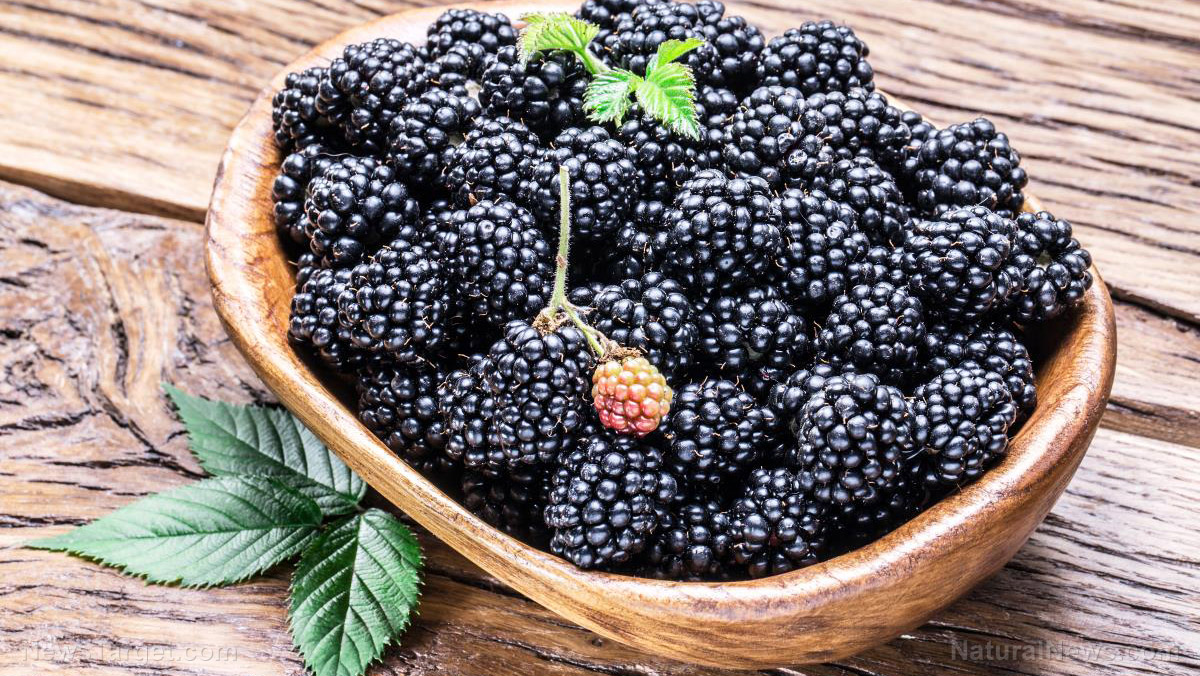
Blackberries ( Rubus fruticosus ) are usually picked between July to August, but you can enjoy these nutritious berries throughout the year. Like other berries, blackberries offer amazing health benefits . Here are just some of them. They’re rich in vitamin C. A cup of raw blackberries provides at least half of the recommended daily target for vitamin C. Vitamin C is crucial for various bodily functions: It helps boost your immunity . It keeps your skin healthy. It’s essential for DNA repair. It’s necessary for the production of collagen and serotonin, a neurotransmitter that promotes happiness and sleep. It promotes wound healing. It helps fight free radicals in your body. It improves iron absorption. It helps prevent scurvy . They’re chock-full of fiber. A cup of fresh blackberries (or 1 and 1/4 cups of frozen blackberries) contains around 60 calories and about eight grams of fiber, or one-third of the recommended daily value. Fiber promotes weight loss by making you feel full for longer periods and curbing cholesterol. Dietary fiber can also help regulate blood sugar and insulin levels. Getting enough dietary fiber can prevent digestive issues such as bloating, constipation, or stomach pain. Blackberries also support digestive health because their fiber content serves as prebiotics, which feed the beneficial bacteria in your gut that are often associated with immunity, mood, and anti-inflammatory effects. They help protect your brain. Blackberries contain antioxidants that protect against brain inflammation , as well as help change the way neurons communicate. Both these outcomes may slow age-related memory loss, strengthen motor coordination, and prevent cognitive decline. Discover how to prevent and reverse heart disease (and other cardio related events) with this free ebook : Written by popular Natural News writer Vicki Batt, this book includes everything you need to know about preventing […]
Deep Learning with Audio Signals: Prepare, Process, Design, Expect
Transcript Choi: I’m Keunwoo Choi from Spotify, I’m working as a research scientist, and the talk title, Deep Learning with Audio Signal, will be a gentle, quick introduction about, what would you do, how would you do when you happen to be in a situation where you suddenly have to work on audio signal, or music maybe, speech, sound, whatever, with the machine learning. A very quick introduction of myself, I studied some of acoustic, a bit of machine learning and MIR, music information retrieval. Now I’m in a team called MIQ, which is mostly in New York and some in London, and everyone’s working on a slightly different topic within an umbrella named MIR, which is basically music and machine learning, mostly music signals and machine learning. After this talk you will probably have some idea about how you start with your task with the machine learning and audio signal, and maybe after working on and on you will quickly get to know a bit more about the thing that I cover with this talk, so think of it as a good starting point or baseline, I’m assuming you’re a beginner on audio, and music, and speech, or sound- and maybe also some of MIR, or deep learning and machine learning. We’ll be covering pretty much every bit of everything very shallowly and quickly. It doesn’t include how would you do music recommendation with Spotify, that’s a bit different topic from my talk. The content of the talk will be about these four different sections, this chronological order about the whole task. How would you prepare the dataset and how would you deal with the audio signal? How do you process the signals so that it could be better and it could be nicer to the model you […]
Prevent Memory Loss: Health Benefits Of Vitamin B12 For Seniors With Alzheimer’s
It is unlikely that a plant-based diet alone will supply you with an adequate amount of vitamin B12. You must make sure that you’re eating and drinking products that have been fortified with the vitamin, or take special supplements to avoid deficiency. High levels of vitamin B12 in the blood are already known to help reduce levels of homocysteine, which has been linked to an increased risk of Alzheimer’s disease, memory loss, and stroke. … During the study, published in Neurology, 17 people developed Alzheimer’s disease. Vitamin B12 may help protect the brain against Alzheimer’s disease , according to new evidence that suggests the vitamin and an amino acid called homocysteine may both be involved in the development of Alzheimer’s. High levels of vitamin B12 in the blood are already known to help reduce levels of homocysteine, which has been linked to an increased risk of Alzheimer’s disease , memory loss , and stroke . But researchers say the relationship between homocysteine and vitamin B12 levels and Alzheimer’s disease risk has been unclear. The seven-year study followed 271 Finnish people ages 65 to 79 who did not have any symptoms of Alzheimer’s disease at the start of the study. During the study, published in Neurology , 17 people developed Alzheimer’s disease. Researchers found that each picomolar increase in blood vitamin B12 level was associated with a 2% reduction in the risk of Alzheimer’s disease among the elderly. In addition, each micromolar increase in blood homocysteine level raised the risk of Alzheimer’s disease by 16%. Blood levels of folate, another nutrient believed to lower homocysteine levels, were not linked to Alzheimer’s disease risk. “Our findings show the need for further research on the role of vitamin B12 as a marker for identifying people who are at increased risk of Alzheimer’s […]
